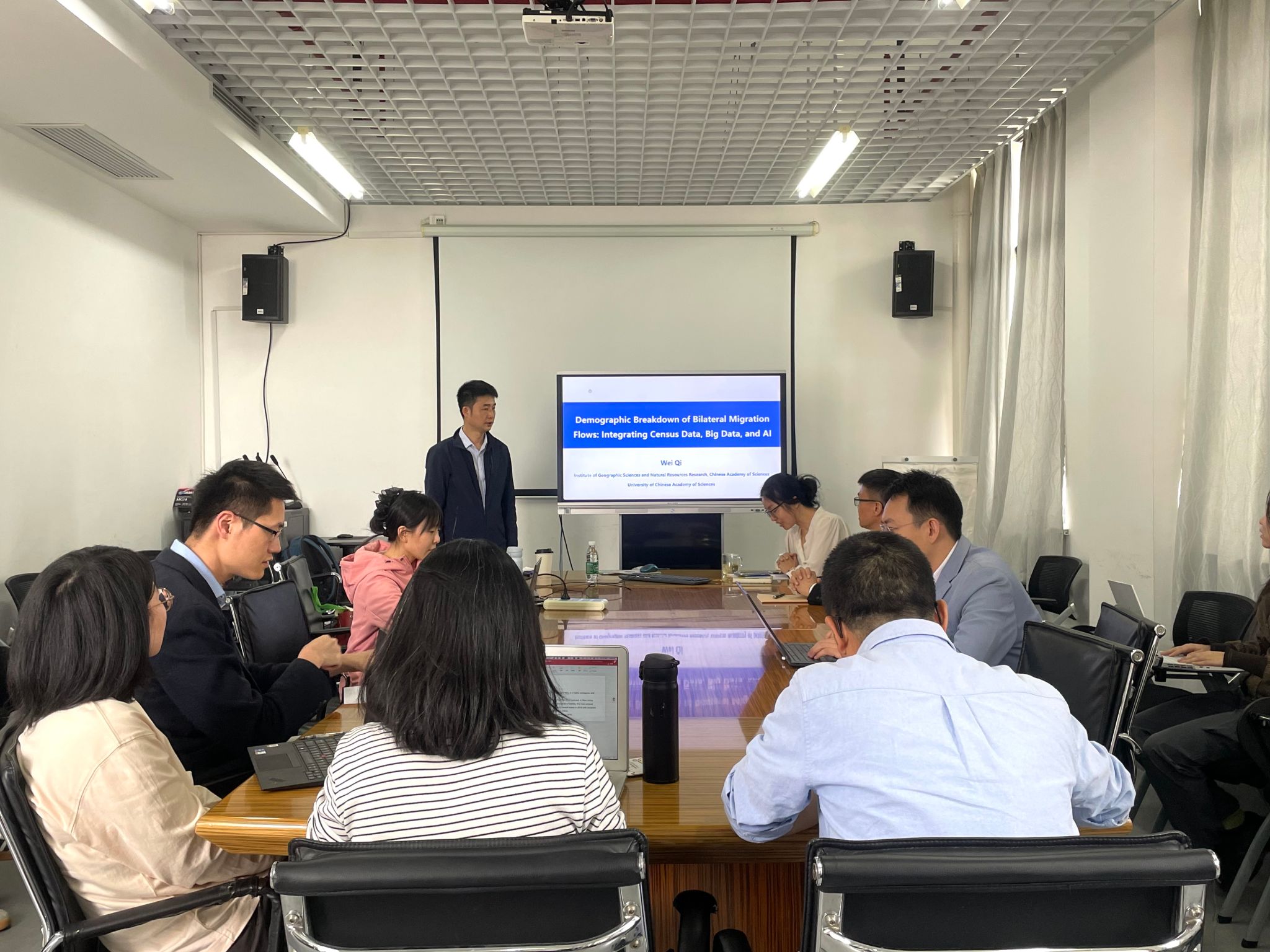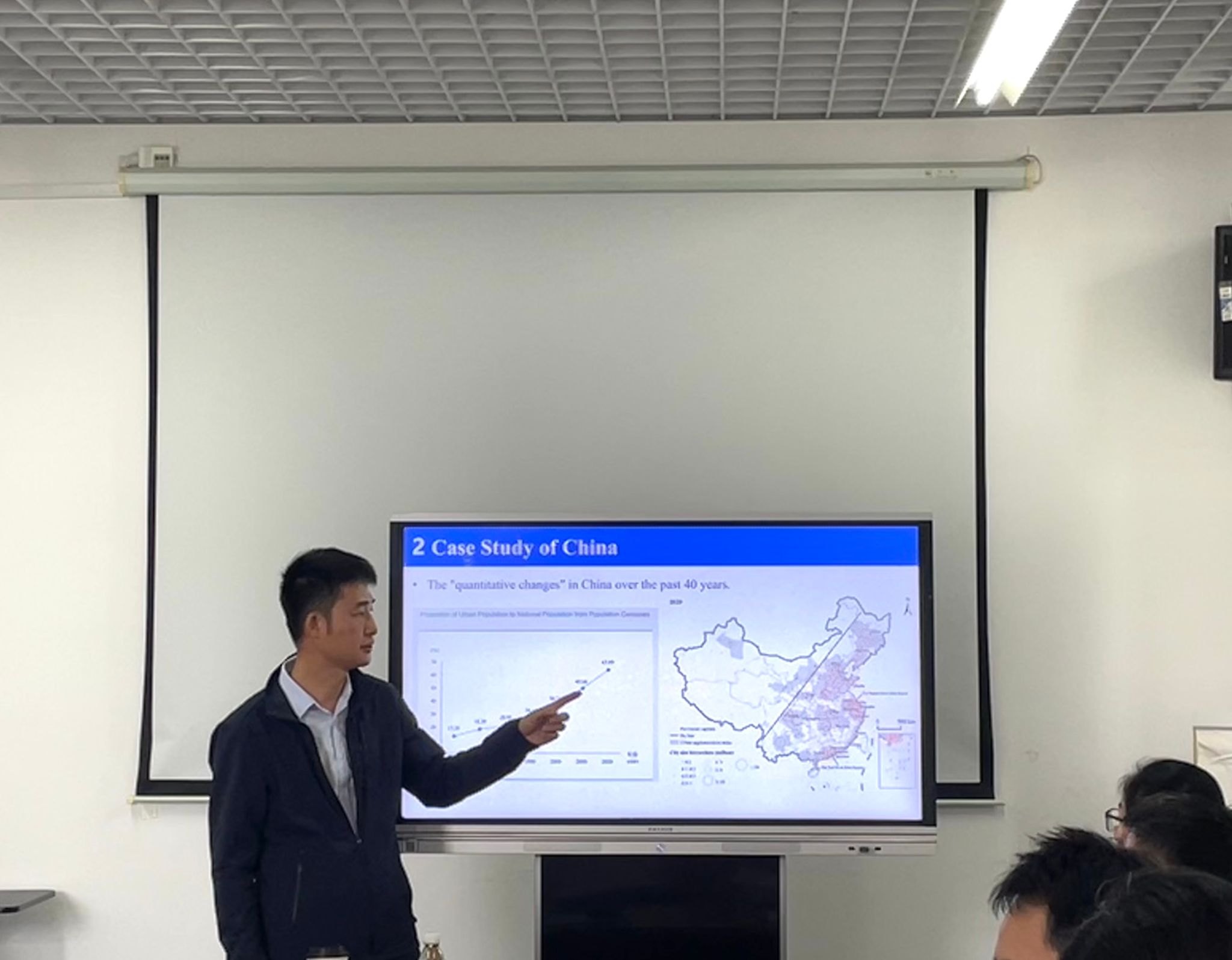On the afternoon of Monday, April 7, ADRI invited Dr. Wei Qi from University of Chinese Academy of Sciences, to deliver a thematic lecture titled "Demographic Breakdown of Bilateral Migration Flows: Integrating Census Data, Big Data, and AI".
Dr. Wei Qi is an associate researcher and master’s supervisor at the Institute of Geographic Sciences and Natural Resources Research, CAS. He has conducted academic visits at the Urban Geography Laboratory of the French National Centre for Scientific Research (CNRS) and the International Institute for Applied Systems Analysis (IIASA) in Austria. His research primarily focuses on population and urban geography, with particular attention to migration dynamics, urbanization, and spatial planning. He has published over 100 academic works in these fields, including analyses and simulations of migration flows, studies on the underlying mechanisms shaping China’s population distribution, and explorations of the complex connections between urban and rural populations—advancing the understanding of population mobility and spatial structures in rapidly evolving urban environments.
The lecture was hosted by Associate Professor Chen Chen, who introduced Dr. Wei Qi’s main research areas and academic contributions, and expressed gratitude for his visit to the Asian Demographic Research Center to share his insights.

This academic lecture aimed to explore the integration of census data, big data, and artificial intelligence in migration research. Studying migration flows helps reveal short-term and contemporary spatial interactions among populations. However, the long-term scarcity of high-resolution migration data, coupled with diverse measurement methods, has prompted increasing interest in simulating and analyzing bilateral international and internal migration flows. As one of the most active regions of internal migration globally, China faces similar data limitations, particularly in tracking bidirectional flows among different population groups. With ongoing shifts in China’s demographic and economic landscapes, growing attention has been paid to the migration patterns of specific groups such as the elderly, children, and highly skilled professionals. This shift underscores the need for migration research that incorporates demographic structure analysis. Yet, detailed data disaggregated by gender, age, and education level remains extremely limited, posing significant challenges for a nuanced understanding of migration dynamics.

In response, Dr. Wei Qi proposed an innovative approach to applying integrated census data and emerging big data sources in migration research based on demographic structure analysis. He assessed their effectiveness in capturing migration flows in China by evaluating key dimensions such as sampling accuracy, geographic resolution, and temporal consistency. His findings suggest that big data can serve as a valuable complement to traditional census records—especially in non-census years—by providing insights into the origins and destinations of various population groups.

Furthermore, Dr. Wei Qi highlighted the transformative potential of machine learning and deep learning algorithms in enhancing the integration of census data with big data. These AI-driven approaches enable robust cross-validation and data inference, greatly enriching our demographic understanding of migration flows and their spatial patterns.
During the Q&A and discussion session, both faculty members and students expressed strong interest in the application of emerging big data in migration research.